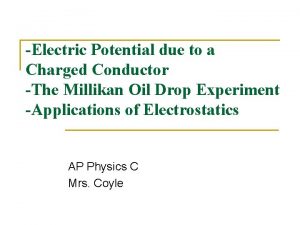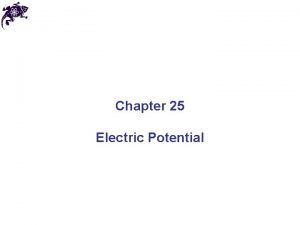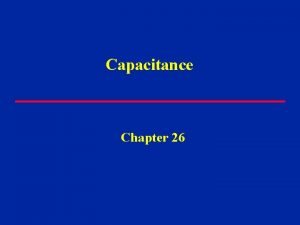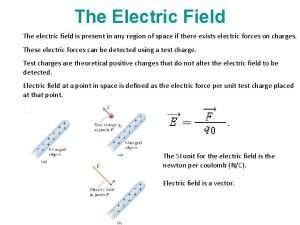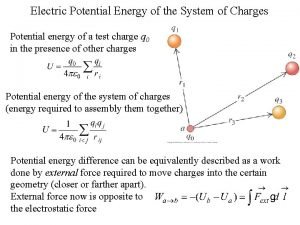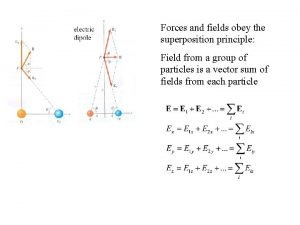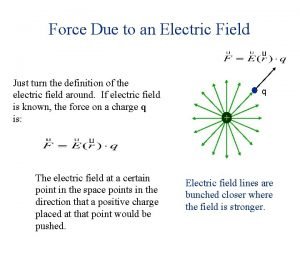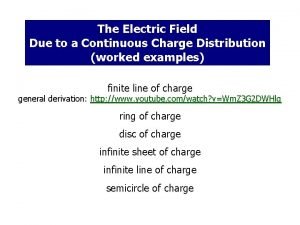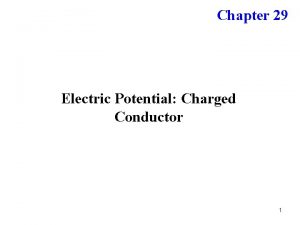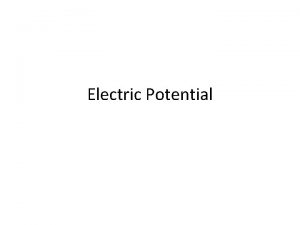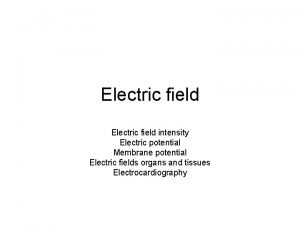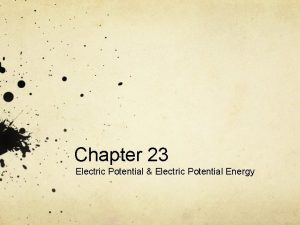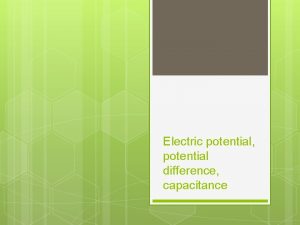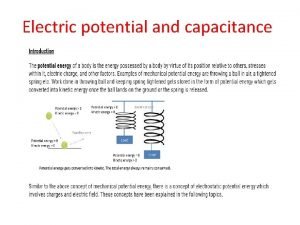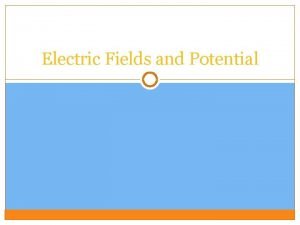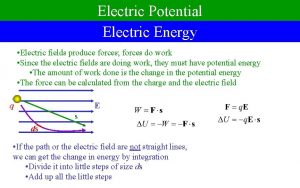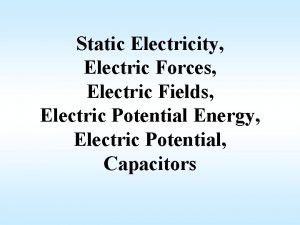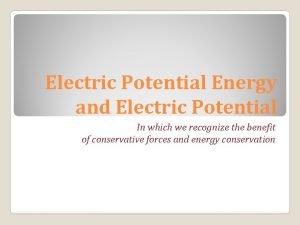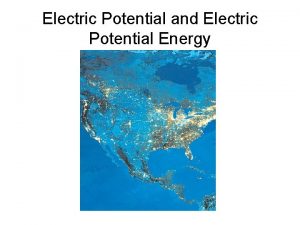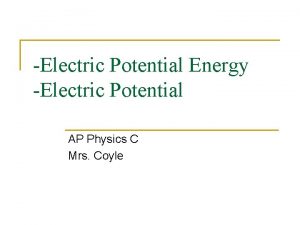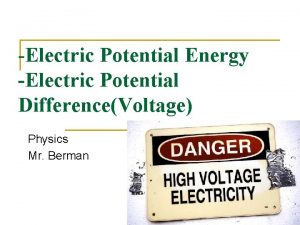Electric Potential due to a Charged Conductor The























- Slides: 23

-Electric Potential due to a Charged Conductor -The Millikan Oil Drop Experiment -Applications of Electrostatics AP Physics C Mrs. Coyle

Electric Potential –What we used so far! n Electric Potential n Potential Difference n Potential for a point charge n Potential for multiple point charges n Potential for continuous charge distribution

n Is the surface of a charged conductor an equipotential? n Is the electric potential constant everywhere inside a charged conductor and equal to its value at the surface?

Electric Potential Difference on the Surface of a Charged Conductor in Equilibrium n n Let A and B be points on the surface of the charged conductor Let ds be the displacement from A to B. E is always perpendicular to the displacement ds. So, E · ds = 0 Therefore, the potential difference between A and B is also zero

Electric Potential Difference on the Surface of a Charged Conductor in Equilibrium n V is constant everywhere on the surface of a charged conductor in equilibrium n ΔV = 0 between any two points on the surface n The surface of any charged conductor in electrostatic equilibrium is an equipotential surface

What about the inside of a charged conductor? n n n E=0 inside the conductor in equilibrium E · ds = 0 Therefore, the electric potential is constant everywhere inside the conductor and equal to the value at the surface.

Solid Conducting Sphere n r<R V=kq/R E=0 n r=R V=kq/R E=k. Q/R 2 n r>R V=kq/r E=k. Q/r 2 Note: n V is a Scalar related to energy n E is a Vector related to force.

Irregularly Shaped Conductors n The charge density is high where the radius of curvature is small n The electric field is high at sharp points

Irregularly Shaped Conductors n The field lines are perpendicular to the conducting surface n The equipotential surfaces are perpendicular to the field lines

Quick Quiz 25. 10 Draw a graph of the electric potential as a function of position relative to the center of the left sphere. (Left sphere 1, radius a), (Right sphere 2, radius c) The centers of the spheres are a distance b apart.

Quick Quiz 25. 10 Answer: See below. Notice the flat plateaus at each conductor, representing the constant electric potential inside a solid conductor.

Ex 25. 9: Two Connected Charged Spheres n n The separation distance of the spheres is much greater than the radius of either sphere so their fields do not affect each other. Show

ΔV= O in a Cavity in a Conductor, so Equipotential to Body of Conductor n n n Assume no charges are inside the cavity E=0 inside the conductor The electric field inside does not depend on the charge distribution on the outside surface of the conductor

Corona Discharge n n If the electric field near a conductor is sufficiently strong, electrons resulting from random ionizations of air molecules near the conductor accelerate away from their parent molecules These electrons can ionize additional molecules near the conductor

Corona Discharge n n n The glow that is observed near a charged conductor of a strong E-field. It results from the recombination of freed electrons with the ionized air molecules Most likely to occur near very sharp points

Millikan Oil-Drop Experiment

Millikan Oil-Drop Experiment n Robert Millikan measured e, the charge of the electron e = 1. 60 x 10 -19 C n He also demonstrated the quantized nature of this charge

Oil-Drop Experiment n With no electric field between the plates: The drop reaches terminal velocity with FD = mg

Oil-Drop Experiment n When an electric field is set up between the plates the drop moves upwards and reaches a new terminal velocity n Fe = mg +FD =q. E n Solve for q n Observed thousands of times and always found e=multiple of 1. 6 x 10 -19 C

Van de Graaff Generator

Electrostatic Precipitator On Off

Electrostatic Precipitator n n n It removes particulate matter like ashes from combustion gases Corona discharge ionizes particles of air Most of the dirt particles are negatively charged and are drawn to the walls by the electric field of the negative potential coil.

Xerography: uses photoconductive material coating(Selenium) a drum
 Electric potential due to a charged conductor
Electric potential due to a charged conductor Electric potential energy
Electric potential energy Electric potential due to a dipole
Electric potential due to a dipole Besadipol
Besadipol Electric potential
Electric potential V=pe/q
V=pe/q Define electric potential and potential difference.
Define electric potential and potential difference. Potential unit
Potential unit Potential electric energy formula
Potential electric energy formula Electric potential is
Electric potential is Potential of conductor
Potential of conductor Potential of conductor
Potential of conductor What is electrostatic shielding
What is electrostatic shielding Sample of conductors and insulators
Sample of conductors and insulators Liberty chapter 20
Liberty chapter 20 Quadrilatero con 4 lati uguali e paralleli a due a due
Quadrilatero con 4 lati uguali e paralleli a due a due Slidetodoc.com
Slidetodoc.com Due piccole sfere identiche sono sospese a due punti
Due piccole sfere identiche sono sospese a due punti Potential due to point charge class 12
Potential due to point charge class 12 Electric current is generated due to
Electric current is generated due to Superposition principle electric field
Superposition principle electric field Force due to electric field
Force due to electric field Electrostatics formula
Electrostatics formula Electric field due to a continuous charge distribution
Electric field due to a continuous charge distribution
